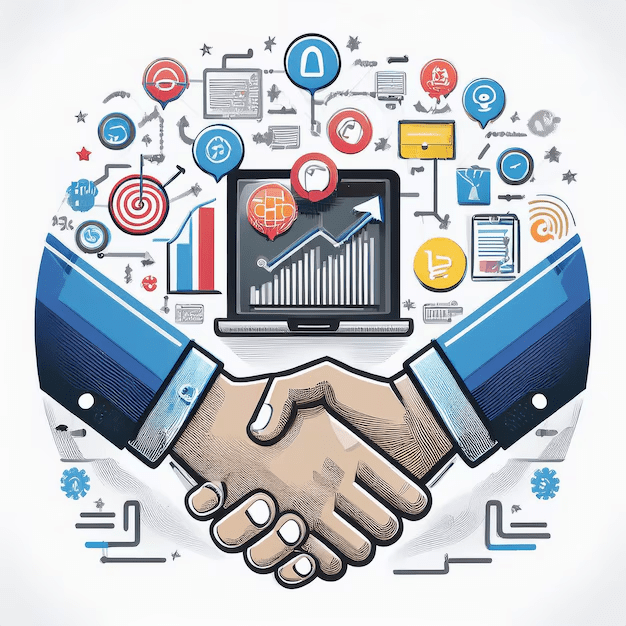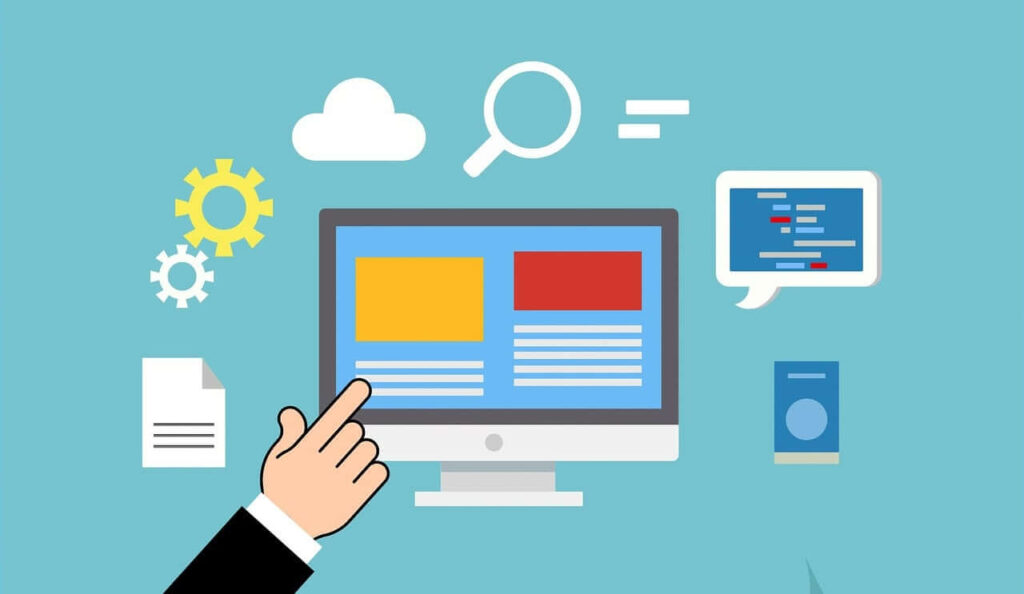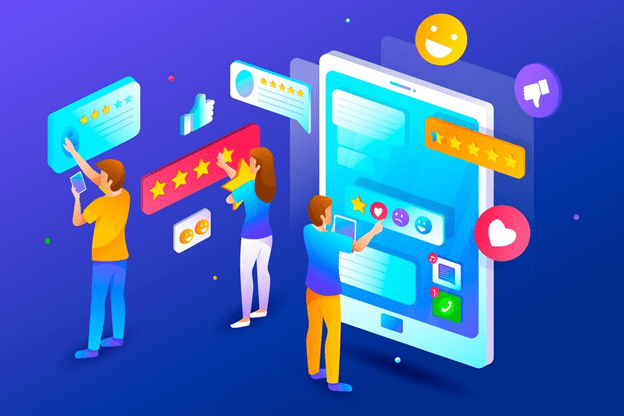Leaving the sales funnel to a whole new level for a digital marketing and e-business company.
But how is that possible?
There’s more to it than just bottom-line sales. In marketing, customers’ journeys are involved, and therefore, there’s the concept of the marketing funnel.
This movement or development is always reiterated in illustration as a funnel. It is often a three-stage funnel whose trajectory is from awareness to the purchase stage.
Do you know what that means?
Welcome to the concept of full-funnel marketing strategies.
In this article, we will explore all the constructional principles of the process called a full-funnel marketing strategy.
Know this: First and foremost, we will disclose each of the stages, their significance, and their differences from traditional marketing strategies.
Further, a tidy conclusion will best give you ideas that will help your business optimize marketing-related actions.
Whether you are or play a role in a marketing-related activity, owning a business, or simply an individual seeking knowledge, this guide has something for you and everyone.
Well, ready? Now’s the time, friends. The time for us to go about this ‘understanding the full-funnel marketing strategy,’ so to speak.
What is Full Funnel Marketing?
Full-funnel marketing is an umbrella that addresses the procedures and processes utilized in acquiring customers and retaining revenue.
Such as the idea that it’s not the sale that kills but rather what creates a relationship that will last forever.
Indeed, there’s an emphasis, a notion that guides potential customers through the buying process.
This is an entire buying process, which is referred to as the purchasing funnel. This funnel has three sections: awareness, consideration, and purchasing.
And there are still some mountains to climb.
The concept is wider and deeper. Above everything else, seven concepts can be singled out: loyalty, the repeat purchase stage, and brand advocacy.
Let’s discuss these stages in detail:
- Awareness: This is the stage when new customers are exposed to your brand for the first time.
- Consideration: At this period, customers have alternatives and are sifting through them to see which one will most effectively meet their needs.
- Conversion: This is the time when a lead transforms into a customer by purchasing something.
- Loyalty: Once the purchase is made, the effort shifts to retaining the customer and cultivating their patronage.
- Advocacy: The last stage occurs when satisfied customers become advocates of the brand and recommend it to others.
By taking measures at each stage, businesses can further their objectives by creating a more effective and efficient full-funnel marketing strategy.
In the following sections, we will examine each of these stages in detail and discuss how they can be optimized.
Why Consider All Stages of Funnel
In the economy of competition, businesses normally expect full-funnel marketing. This strategy enables companies to interact with their customers throughout the customer journey, making it impossible for any potential customer to be ignored.
It also helps businesses attain appropriate levels of customer satisfaction at different business levels, leading to higher levels of loyalty and advocacy.
Thus, by concentrating on the whole customer journey, businesses can appreciate the factors driving their customers.
That realization enables them to develop strategies that are more appropriate to the target audience, making their campaigns more fruitful.
Furthermore, a full-funnel marketing approach can allow firms to pinpoint the areas where they might be losing potential clients.
By dealing with such challenges, they can enhance conversion rates and, finally, overall revenues.
In turn, in the sections to come, we will study the various steps of the marketing funnel and the ways to manage the levels more efficiently.
Stages of the Full-Funnel Marketing Strategy
A complete full-funnel marketing strategy is not just one phase in nature; it includes several phases.
Phases are each associated with different parts of the customer lifecycle.
For instance, the phases are notorious for being labeled into four: Awareness, Consideration, Conversion, and Loyalty/Advocacy, all of which are interrelated.
A customer must be contacted at each stage with a different marketing message.
Knowing these stages will assist companies in devising strategies for marketing to customers at various stages of their journey.
This will result in more successful campaigns and greater conversion ratios.
There are stages in a full-funnel marketing strategy. They are:
- Top of the Funnel (TOFU): Awareness
- Middle of the Funnel (MOFU): Consideration
- Bottom of the Funnel (BOFU): Conversion
The sequence of actions goes beyond the funnel stage, where you have loyalty and advocacy.
Proceed to the bottom of the funnel. The top of the funnel is referred to as the awareness stage.
“What are you thinking? Should we use the Marketing 2.0 funds for awareness creation?” At this point, the awareness creation people are in charge.
In this stage, the aim is to get potential customers to pay attention to the business and brand.
Middle of the Funnel (MOFU): Consideration
Reaching out to consumers who are already likely to purchase the product is the next objective.
This is the consideration stage, during which customers try to choose between several alternatives before making a purchase decision.
The Bottom of the Funnel (BOFU): the stage of conversion. Purchases are actually made at the bottom of the funnel. The consumer is persuaded to buy the goods in question at this stage. They have made a purchase, but the journey is still ongoing. This final stage is about converting customers into avid and loyal brand advocates.
Exploring Full Funnel Marketing Strategy
A full-funnel marketing strategy is highly advanced and, some say, complicated.
No stage in the funnel is ignored, as different strategies must be used for different areas of the funnel.
At the top of the funnel, creating awareness is the goal. The easiest way to do this is through content, social media, and search engine optimization.
As we go lower in the funnel, pauses shift, and now the aim is to connect with potential customers. This can be through engaging marketing, focused emails, and hands-on content.
When one gets to the bottom of the funnel, the aim changes to conversion. Such as discrete opportunities, considerable calls to action, and simple ways to check out.
However, other than the funnel, the focus is on giving support and making customers brand advocates.
Best practices include satisfaction of customers, intelligent promotions, and requesting feedback and referrals from customers.
Content Marketing Across the Funnel
Full funnel marketing does not work without digital content strategies. At every step of the funnel, it attracts, engages, or converts potential customers.
Personalization and Segmentation
Mid-funnel strategies should include personalization as well as Segmentation strategies to engage the customers.
Low-funnel customers marketed with proper messages are expected to engage more and convert.
Multi-Channel Marketing and Touchpoints
Multi-channel marketing is very important in a full-funnel marketing strategy.
Although it may seem straightforward, measuring the success of a full-funnel marketing strategy requires careful consideration of certain key performance indicators (KPIs).
Such KPIs can cover a range of metrics, including conversion rates, customer acquisition costs, and customer lifetime value.
Pitfalls and Recommended Approaches
Of course, there are several obstacles to be encountered in the execution of a full-funnel marketing strategy.
A typical hurdle is the unification of brands’ marketing messages at different stages of the funnel.
This is cross-functional marketing that demands a higher-level comprehension of the customer journey and consistent messaging that pulls the brand together in both senses – form and function.
However, these obstacles pale in comparison to the advantages presented by a full-funnel marketing approach. By concentrating on the entirety of the customer journey, businesses have more efficient and impactful marketing strategies that result in lower costs.
Consider best practices that aim to foster audience engagement through targeted messaging, integrate numerous channels in their marketing, and constantly assess their impacts.
However, the next step lies in bridging the gap between anticipated results and actual ones. In that case, it’s worth mentioning that learning about marketing based on a full-funnel marketing approach is more effective than most approaches.
You have to understand that the work does not end with the development process. It is a cycle, first of all, a cycle of learning, testing, and optimization. Start by mapping your customer journey and then develop your marketing strategies to accompany each phase of the funnel.
Wildnet Technologies is a leading digital marketing company in India that has had the pleasure of nurturing 4100+ clients and generating more than USD 150 million in revenue over our 17-year-long journey.
Read more
- What is optimization in digital marketing?
- AI-Powered Predictive Analytics in Digital Marketing: 2025 Trends
- Exploring Different Types of Search Engine Marketing
- Attribution in Marketing: The Guide
- How To Do Competitor Analysis In Digital Marketing In 11 Steps
- How to Achieve Your Social Media Marketing Goals in 2024
Faq
Ques1. What is full-funnel marketing?
Full funnel marketing is a strategy that targets consumers at every stage of the buying process, from awareness to conversion and retention, ensuring consistent engagement throughout their journey.
Ques2. Why is full-funnel marketing important?
It helps brands create a comprehensive strategy that nurtures leads at every stage, increasing the chances of conversions by delivering the right message at the right time.
Ques3. What are the stages of a full-funnel marketing approach?
The stages typically include the Top of the Funnel (Awareness), the Middle of the Funnel (Consideration), and the Bottom of the Funnel (Conversion), followed by post-purchase engagement for retention.
Ques4. How does full-funnel marketing impact customer relationships?
Addressing customer needs at each stage builds trust and engagement, fostering stronger, long-term relationships with customers.
Ques5. Which channels are most effective for full-funnel marketing?
Common channels include social media, email marketing, content marketing, paid ads, and SEO, with different channels suited for different stages of the funnel.






